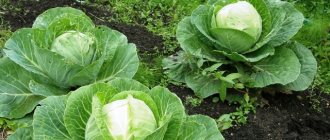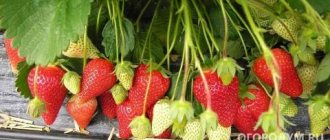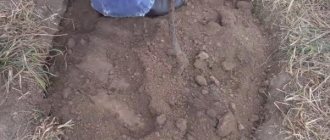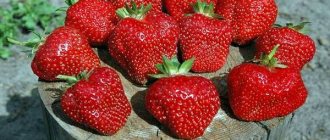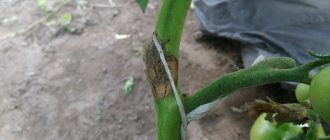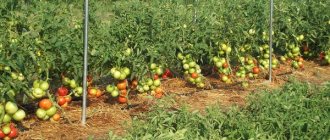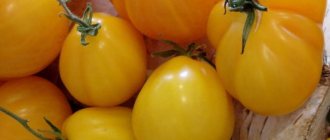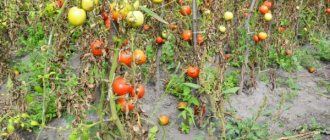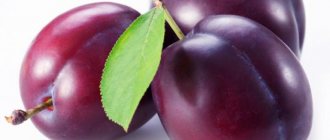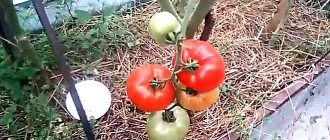Home Diseases and pests
Plum diseases spread quickly throughout the garden. If plum diseases are not treated promptly, the consequences can be extremely destructive. The fact is that this garden crop is affected by all those pathogens that successfully parasitize other stone fruit crops (cherry, sweet cherry, apricot, peach, etc.). Therefore, we suggest that you learn about plum diseases and how to combat them in advance, so that during the season you can carry out effective observations of the condition of the trees. If signs of plum disease appear and control of them is necessary, then this knowledge will help to correctly apply all chemical means of effective protection against fungal, bacterial and viral infections. Read about how to treat and timely protect this fruit crop in your garden. See the illustrations that are presented in large numbers on the page and demonstrate the characteristic signs of diseases.
- 2 Disease of the trunk and bark of the plum tree, false tinder fungus
- 3 Protection of plums from diseases caused by tinder fungi
- 4 Diseases of plum ovular spotting: description with photographs
- 5 Diseases of plum leaves
- 6 Scab - a disease of plum fruits and its treatment (with photo)
Plum disease black nodule and its treatment (with photo)
We propose to consider this plum disease and its treatment in detail, since it is very common.
The causative agent of black knot is the fungus Plowrightia morbosa (Schw.) Sacc. Young and older shoots thicken, spindle-shaped soft greenish swellings appear, which gradually harden and crack. The developing mycelium gives them a velvety black color. The growths increase, which causes deformation of the affected branches, and the development of mycelium leads to the death of the wood and drying out of the branches. The infection persists in the wood of the affected branches. The disease often occurs on apricot.
Look at the typical signs of this plum disease in the photo where they are illustrated:
Control measures. Timely pruning and burning of branches with black knots, disinfecting the cuts with 1% copper sulfate and covering them with oil paint. Preventive spraying of trees in the spring when buds are breaking with Bordeaux mixture or its substitutes (HOM, Abiga-Peak).
Non-communicable diseases
Non-infectious diseases arise due to unfavorable environmental conditions, improper selection of fertilizers and, as a result, other diseases.
Gum treatment
When gumming occurs, resin appears on the tree trunk. Causes of the disease:
- abundant watering, high humidity;
- increased soil acidity;
- open wet areas for pruning branches.
Brown tears appear due to the application of large amounts of fertilizer. Trees are also damaged by freezing. After formative and sanitary pruning, wounds remain. If the damage is not disinfected with garden varnish, a brown discharge similar to burnt sugar appears on it.
How to deal with the disease:
- clean off the gum with a sharp, clean knife;
- lubricate the branch with a solution of copper sulfate 1%;
- grind fresh sorrel leaves and rub them on the affected area;
- treat the bark with garden varnish.
The second name of the disease is gommosis. It is dangerous because tarry areas become a favorable environment for further infection.
Drying out
The plum dries out after planting in unsuitable conditions:
- with a superficial location of groundwater;
- in alkaline soil, saline soil;
- in harsh climates with cold winters.
A sign of the condition is uniformly dried, brown leaves curled into tubes. To stop drying out, it is necessary to create favorable conditions for the tree: reduce the acidity of the soil, replant it in a dry place protected from bad weather.
Disease of the trunk and bark of the plum tree, false tinder fungus
The causative agent of this disease of the plum tree is the fungus Phellinus igniarius (L.: Fr.) Quel. A plum trunk disease called false fungus causes white heart rot of the wood. Common on plum, cherry, sweet cherry, pear trunks, and on deciduous forest trees. A typical sign of plum bark disease is veins and black lines in the tissue of the affected wood. The fruiting bodies are perennial, hoof-shaped, cushion-shaped, occasionally nodule-shaped, prostrate.
The surface is grayish-black or black-brown, with concentric grooves and usually deep cracks. The edge is blunt, less often pointed. The fabric is woody, very hard, dark brown or rusty brown. The hymenophore is rusty brown, sometimes with a grayish coating, usually located at a right angle to the trunk.
Look at the characteristic signs of plum disease in the photo, which shows the differences between healthy and damaged bark and wood:
Protecting plums from diseases caused by tinder fungi
Effective protection of plums from diseases caused by other tinder fungi must be timely.
Look at these plum diseases and the fight against them in the photo, which shows both signs of damage and agrotechnical treatment measures:
Red plum tinder fungus.
The causative agent is the fungus Phellinus tuberculosus (Baumg.) Niem. (syn. Ph. poraaceus (Pers.) Maire). The plum tinder fungus causes core rot of trunks and branches, and sometimes the sapwood (in cherries) is also affected. The affected tissue shows strong yellowing with brown stripes along the edges, rot spreads up and down the trunk, and the roots are often affected. Infection occurs through frost holes, saw cuts and mechanical damage. All stone fruits, bird cherry, hawthorn, and sometimes apple and pear are affected.
The fruiting bodies are small, in the form of woody thick caps or hoof-shaped, with an outstretched base, nodule-shaped or terrace-like fused. The surface is initially velvety, later bare, smooth or fissured, sometimes vaguely furrowed, with a blunt, barren reddish edge, brownish-gray to black or yellowish-brown. The fabric is brownish-rusty. The hymenophore is reddish, with age it becomes a brownish-tobacco color with a grayish coating.
The tinder fungus is flat.
The causative agent is the fungus Ganoderma lipsiense (Batsch.) GF Atk. (syn. Ganoderma applanatum (Pers. ex Wallr.) Pat.). Flat tinder fungus causes white or yellowish-white rot in wood, causing trees to break easily. It affects weakened, drying deciduous trees, plums, cherries, pears, apple trees, etc. Infection occurs on the roots, at the base of the trunk, from where the mycelium spreads upward through the core. Fruiting bodies are in the form of lateral, usually single flat caps, often very large, 20-50 cm wide. The surface is uneven, tuberculate, chocolate-brown or grayish-brown, matte or with a slight sheen. There is a thin hard crust. The fabric is cork-felt, dark brown, often with white efflorescences. The hymenophore is initially white, later brownish.
The tinder fungus is sulphurous yellow.
The causative agent is the fungus Laetiporus sulphureus (Bull.: Fr.) Murr. The sulfur-yellow tinder fungus causes brown heart rot that quickly spreads throughout the wood. The affected tissue cracks and is filled with whitish films of the mycelium. The tinder fungus is found on cherries, less often on cherries, pears, and deciduous trees. The fruiting bodies are large (up to 40 cm), in the form of thick fan-shaped or spatulate wavy caps located on the bed. The surface is bare, light orange or orange-pink, turning pale when dry. The tissue is white or creamy, soft, watery-fleshy, hardens when dried, and is fragile. The hymenophore is lemon-yellow or sulfur-colored.
Control measures. Cutting and burning of fruiting bodies, disinfection of all cuts, cuts, frost holes, mechanical damage with 1% copper sulfate, covering with oil paint on natural drying oil. Timely removal and burning of dried trees along with their roots. Preventive annual spring spraying of gardens before leaves bloom with 1% Bordeaux mixture or its substitutes (HOM, Abiga-Peak).
Viral lesions are a global threat to the plum crop
While fungal diseases are fairly easy to treat, the same cannot be said about viruses. One of the dangerous viruses is plum dwarfism. Its initial signs can be seen in the small leaves; they have an elongated shape and uneven edges. Over time, compaction of the sheet plate and its fragility are added to the non-standard shape. A large number of such leaves are located at the top of the shoots. Stone fruit flowers set poorly and have a sickly and pale appearance. As a result, the dwarfism virus leads to slow growth and death.
It is useless to fight the virus. Dig up the infected tree and burn it. As preventive measures against dwarfism, we recommend using only sterile garden tools, using all methods to destroy pests on the site and choosing seedlings that are resistant to the virus.
Smallpox occurs not only in humans, but also in stone fruit crops. Pox, also known as Sharkey virus, primarily attacks leaves, producing chlorotic ring-like spots on them that are clearly visible in sunlight. Fruits are also susceptible to infection. They become dense and significantly deformed. Inside, the flesh acquires a brownish-red tint, and ring-shaped depressed spots form on the skin; gum is visible in the cracks. Such fruits lose their taste, they fall off and are absolutely unsuitable for consumption.
Viral lesions of plum
To prevent the development of Sharkey virus, choose resistant varieties, such as Renclaude, and avoid planting Mirabelle Wangangheim, Nancy and Zimmer. The disease can appear on stone fruit trees throughout Russia, and is especially common in the southern regions, where all favorable conditions are created for its development. Frequent carriers of Sharki are aphids, so be especially attentive to this pest and take appropriate measures to destroy it in a timely manner. You should not plant ornamental plants near plums, as well as those crops that may be potential carriers of the virus - clover, sweet clover, nightshade, etc. Specimens infected with the disease cannot be treated; they are uprooted and burned.
Chlorotic ring spot is another dangerous plum virus. It is characterized by the formation of a blurred pattern on the leaf plates. Over time, the ring spots fall out, and in their place there remains a thin mosaic border and through holes. The virus also affects leaves. They become smaller, become narrow and hard, and have a wrinkled texture. Infection can occur through unsterile equipment, poor-quality planting material, and can also be carried by insect pests. Affected trees must be dug up and burned.
Diseases of plum ovular spot: description with photographs
The description of this plum disease must begin with the fact that its causative agent is the fungus Ovularia circumscissa Sorok . The spots on the leaves are large, concentric, oval or round, merging, brown in color and without borders. Over time, a gray coating of fungal sporulation develops on the surface of the necrotic tissue, and the affected tissues crack and fall out. The leaves turn brown and fall off prematurely. The infection persists in the affected plant debris.
Having studied the proposed description of the plum disease with photographs, you can begin to study methods of treating ovular spot:
Control measures. Collecting and composting fallen affected leaves. Preventive spraying of trees in the spring before flowering and immediately after it with 1% Bordeaux mixture or its substitutes (HOM, Abiga-Peak). In case of mass spread of spotting, repeated spraying is carried out in the summer, taking into account the waiting time for the preparations, and after harvesting the fruits.
milky shine
The appearance of a plum disease, the photographs of which you see, indicates a general weakening of the tree or frostbite. It appears especially often with the onset of wet weather. The bark acquires a dark shade, becomes covered with red and brown spots and falls off, and the crown, on the contrary, becomes covered with a milky coating. During the course of the disease, the green crown becomes covered with through holes, becomes lethargic and dies.
Plum milky sheen disease
Milky sheen cannot be cured. Despite treatments with fungicides and pruning of infected parts, the disease affects the entire crop. As a result, it dies.
Prevention measures
To prevent the milky sheen from appearing, gardeners advise taking preventive measures:
- do not plant next to poplars that carry the virus;
- be sure to whiten the trunk in autumn and spring;
- apply complex fertilizing;
- remove damaged branches with sterile equipment.
Control measures. Autumn whitewashing of the trunk, increasing the winter hardiness of the tree, spring feeding, timely removal and destruction of disease-damaged branches.
Diseases and pests cause significant damage to the plum crop and can weaken the tree so much that it cannot withstand even a mild winter and will die. To prevent this from happening, gardeners need to use some agrotechnical measures and, as a last resort, chemicals.
- Early spring (before the buds swell). Damaged branches are cut off and destroyed. Frost cracks and cuts are covered with garden varnish. The soil is dug up. The plum is sprayed with 3% nitrophen (60% paste).
- Flowering period. Chemical sprays are not used during this period. The flowering plant is treated with a solution of honey (30 g per 10 liters of water) with the addition of microfertilizers (1 tablespoon or 1 tablet per 10 liters of water).
- The period after flowering (before ripening). Chemical spraying is carried out with a solution of 0.2% chlorophos, 0.5% copper oxychloride and 0.4% vitriol.
- Maturation period. Diseased ovaries are collected and destroyed. Tin cans, flags and onion halves are hung to scare away birds.
- After the harvest. All items used to scare away birds are removed. The tree is examined for broken branches and diseases, wounds are treated and sprayed with a garlic-mustard solution with ash decoction, with the addition of 50 g of mineral fertilizers and 1 tablet of microfertilizers per 10 liters of water.
- Autumn-winter period. All weeds are carefully removed, fallen leaves are raked and destroyed, trunks, broken trees and sunburn areas are whitened, and the soil around the tree is dug up.
- Late fall. The trunks are whitewashed again, which are then wrapped with roofing felt, spruce branches, roofing felt or white transparent film.
Plum leaf diseases
The following are common diseases of plum leaves, which ultimately lead to the death of the entire tree. Therefore, they need to be identified and treated promptly.
Black plum leaves.
The causative agent of plum leaf disease is the saprotrophic fungus Fumago vagans Pers. The disease manifests itself in early summer, when young leaves and petioles of plums are covered with a sooty coating in the form of an easily erasable black film. The fungus develops on the sweet secretions of aphids, which are always abundant in early summer. The formation of a dense film has a bad effect on the growth and development of young leaves and shoots, as the efficiency of the photosynthesis process decreases. And this leads to a decrease in the yield and decorative value of trees.
Control measures. Preventive spraying before flowering or immediately after it against a complex of pests, including aphids, with one of the drugs: fufanon, kemifos, fitoverm, actellik, spark, Inta-Vir. The sooty deposits are washed off with water and the trees are sprayed with 1%-1 Bordeaux mixture or its substitutes. In this case, it is very effective to use a tank mixture of drugs: fufanon (10 ml) + HOM (or Abiga-Pik) (40 g/10 l | water). Spraying is carried out before flowering, immediately after flowering and, if necessary, after picking berries. This treatment is effective against a complex of pests and diseases on all berries, fruits and ornamental plants in the garden.
Plum rust.
The causative agent is the multi-host fungus Riscinia prunispinosae Pers. syn. Tranzchelia prunispinosae /Pers./ Diet./. The aecidial stage develops on the buttercup anemone, uredinio- and teliosporation - on stone fruit leaves.
Rust affects plums and sloe, and to a lesser extent apricot, almond and peach. The fungus overwinters on fallen, infected leaves, in the spring it infects anemone, and in the summer the spores re-infect plum or apricot leaves.
Small yellowish spots form on the leaves, on the underside of which brown convex sporulation pads develop. Affected leaves dry out prematurely and fall off. The infection persists in the affected plant debris and in the rhizomes of anemone.
Control measures. Collection and removal of plant debris and weeds, especially anemone. Preventive spraying of trees immediately after flowering with 1% Bordeaux mixture or its substitutes (HOM, Abiga-Peak).
The milky sheen of plum.
The milky sheen can be non-infectious and infectious. The first is caused by unfavorable environmental factors, primarily freezing of fruit trees. The leaves of most of the crown acquire a gray color with a metallic sheen, become hard, and the wood of the branches does not change. Affected leaves fall prematurely, which weakens the trees and reduces their winter hardiness.
Infectious milky sheen is caused by the fungus Chondrostereum purpureum (Pers.) Fr. , which is a secondary infection when trees freeze in winter. Stem rot develops, first affecting individual branches, and gradually the entire tree. The affected wood on a cross section has brown spots of varying sizes, and the leaves acquire a silvery tint due to the formation of air cavities under the skin.
In mid-June, the affected leaves become deformed, become covered with brown spots and, starting from the tip, dry out. On dying branches, leathery fruiting bodies form in the form of thin plates 2-3 cm wide, and the trees gradually dry out. The infection persists in the affected wood. The milky sheen affects all fruit trees and many deciduous trees.
Control measures. Compliance with all requirements of agricultural technology for growing fruit crops, pruning dry branches, removing dried trees. Disinfection of all cuts and mechanical damage with 1% copper sulfate, covering with oil paint. Annual preventative spraying of gardens before flowering and immediately after it with 1% Bordeaux mixture or its substitutes (HOM, Abiga-Peak).
Chapter 1. Why holes appear on plum leaves
If holes appear en masse on the leaves, then most likely the plum is affected by clasterosporiasis. Pests can also eat leaves and make holes in them, but it looks different.
Section 1. Description of cleasterosporiosis
carpoph is caused by the fungus
. This microorganism overwinters in the form of spores, hiding in cracks in the bark and under the bark. As soon as the spring sun warms up and the temperature begins to rise, the spores begin to actively germinate.
The microorganism affects almost all areas and above-ground organs of fruit plants, so the fungus develops on buds, leaves, flowers, ovaries, fruits and even woody shoots.
However, a characteristic sign of clasterosporiasis is active damage to tree leaves. As a result, spots of red-brown or crimson shades with a diameter of 1-2 mm appear on them. After a few days, they double in size, up to 4-5 mm, after which the tissue in this place gradually dies. This leads to the fact that the affected areas of the leaf dry out and crumble, and a through hole with a characteristic reddish edge appears in the leaf.
If the pathogen multiplies excessively, plum shoots are also affected. Small round spots with a diameter of about 1 mm of a red or orange hue, with a brown or black border, appear on their surface. After a few days, they increase to 3-5 mm, stretch, press into the surface and crack over time. At the same time, the color of the spot changes to a paler color with a purple border along the contour.
It is not uncommon to see abundant release of gum, a thick, resinous substance, from such areas. If the disease is not treated in a timely manner, the cracks heal and growths form around them.
The affected tree buds also become covered with characteristic spots, after which they begin to secrete gum abundantly. The gum dries, and gradually their surface becomes glossy. Over time, the tissues turn black, and the buds die and crumble. If flowers have time to develop on them before this moment, clasterosporiasis leads to their shedding.
Clusterosporium can also develop on fruits - ulcer-like spots appear on the surface of plums. At the beginning of the process, they may have shades of brown-red or brown. Over time, they grow and take the form of warts. The top of the wart hardens, after which it falls off, and in its place a dimple forms, from which gum flows abundantly.
Occasionally, the spots may grow together, forming a scab or scab, in which case the fruits die completely.
Scab is a disease of plum fruits and its treatment (with photo)
The causative agent of this disease of plum fruit is the fungus Cladosporium carpophilum (Thume) Oud . Affects plum, apricot, peach.
This plum disease and its treatment with photos are presented further on the page: all the signs and methods of control are discussed.
The disease manifests itself on fruits, less often on leaves and shoots.
When the fruit reaches half its size, small, greenish-olive fuzzy spots appear on the skin. Scab spots enlarge, become darker and velvety, and acquire clear boundaries. With severe scab development, the spots merge and a crust forms on the surface of the fruit, which often cracks. In some years, severe fruit shedding is observed. By the end of summer, leaves and young shoots are overinfected, on which blurry pale green spots appear, usually on the underside of the leaf. The infection persists in the bark of the affected shoots, in the affected fallen leaves and fruits.
Control measures. Preventive spraying in the spring, before the leaves bloom and immediately after flowering, with 1% Bordeaux mixture or its substitutes (HOM, Abiga-Peak). In case of severe manifestation of the disease, after harvesting the fruits, spray with one of the drugs: speed, rayok, chorus. Timely collection and burning of fallen affected leaves and fruits.
Penicillium rot.
The causative agent is the fungus Penicillium glaucum Lk. (syn. P. expansum (Lk.) Thom.). The disease develops on mechanically damaged or overripe, cracked fruits of plums, apples and many other fruit and vegetable crops. The affected tissues turn brown, rot, and become covered with a dense greenish coating of fungal sporulation. The fruits become unsuitable for consumption.
Penicillium rot often appears during long-term storage of collected fruits, when they become massively infected and rot. The infection persists in the soil on plant debris.
Control measures. Removal of plant residues, collection of carrion. Preventive spraying of gardens in the spring before flowering or immediately after it with 1% Bordeaux mixture or its substitutes (HOM, Abiga-Peak).
Watch all the plum diseases presented above in the video, which shows control measures and characteristic symptoms of lesions:
VIDEO
- Author: admin
Rate this article:
- 5
- 4
- 3
- 2
- 1
(11 votes, average: 3.4 out of 5)
Share with your friends!
Coccomycosis, or red spot
Plum (fighting diseases, as a rule, does not present any difficulties) is very often affected by this fungal disease. As a rule, coccomycosis appears on leaves and fruits due to poor care. This disease manifests itself as red spots; they can be either pale or bright. The underside of the leaf is covered with spores of this fungus. As a result of the damage, the leaves turn yellow and fall over time, in some cases their color becomes brown.
Fruits can also be affected. In particular, they stop developing. The fungus spores can survive freezing temperatures in the winter, and the fungus releases them in the spring. Favorable conditions for the onset of disease development are elevated temperature and humidity.
If a plum is affected, the disease (photo can be seen in the article) is recommended to be treated immediately. But first, the tree must be freed from affected leaves and fruits. After this they must be destroyed. An effective method of control is digging up the soil, which should be done in spring and autumn. It is also necessary to spray with chemicals, such as Bordeaux mixture or copper chloride. There should be three such procedures:
- during the period of formation of green buds;
- after flowering;
- after harvest.
This disease affects flowers, ovaries, fruits, young branches and annual shoots of plums. The causative agent is a fungus. There are two forms that affect plums (diseases and treatment are described in the article):
- monilial burn in spring;
- fruit rot in summer.
Despite the fact that the causative agent of these forms is the same, the number of affected flowers and fruits is completely different. Fruits are the most susceptible to disease, especially if the air is characterized by high humidity. The causative agent of monoliosis can overwinter without losing its viability in mummified fruits, as well as in the tissues of affected branches.
Manifestations of the disease are as follows: pronounced rot appears on the fruits, after which they dry out. The lesions are pads measuring about 0.5-1.5 mm. It is in these places that disputes accumulate. Rotten fruits may either fall off or remain on the tree until spring.
In the case of fruit rot, it is better to carry out timely prevention than to treat the plum later. It is necessary to carry out thinning pruning in a timely manner and destroy all fallen leaves, since among them there may be rotten fruits and affected shoots.
If the plum (diseases and treatment are described in this article) is already affected by moniliosis, then the trees must be treated with Bordeaux mixture at a concentration of 3-4% during the green cone period and at a concentration of 1% during the period after flowering. As a fixing treatment, spraying is carried out three weeks after the last procedure. During humid summers, the number of procedures should be increased.
